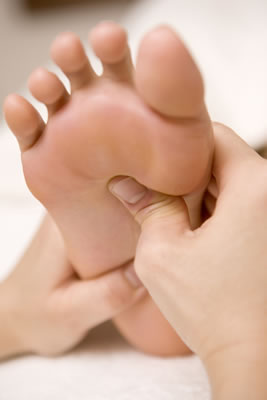Activity + Foot Pain is a Tough Combo 👟
The theme for this week …
By some estimates foot pain bothers 20% of people over the age of 50. Podiatrists must be very busy! Because our focus is on being active, which is hard to do when your feet hurt, we wanted to further understand the relationship of foot pain and quality of life. Read on …
Foot pain and quality of life
Feet are our primary connection to the ground and help us maintain balance which is essential for many activities. Is it any wonder, then, that foot pain can be the cause of inactivity?
Although most common in the elderly, foot pain can be found at any age. It is also associated with:
- Poor coordination
- Poor balance
- Fractures
- Falls
- Anxiety and depression
- Loneliness
Related research
The 2023 study, Impact of Chronic Foot Pain Related Quality of Life: A Retrospective Case-Control Study from Spain is one of the first to systematically study the impact of the feet upon quality of life.
Unlike so many medical studies, this one had a wide range of participants including a 2:1 ratio of female to male participants, and an age span from 11 to 80.
What was the biggest finding?
As you might expect, foot pain was correlated to significant decreases in activity levels, regardless of gender. More importantly, general health was negatively impacted to a statistically significant level.
The conclusion was that improved foot care would have a significant public health benefit.
How can Bridging® play a role in foot function for your well-being?
Over the years we’ve helped many people with foot pain have better function. At the end of a session they walk away with ease, and a feeling of better balance, and being more grounded.
The most common reasons we find for foot pain are:
- Injuries
- Surgeries with recovery challenges
- Neuropathy from side affects of various drug therapies, or condition like diabetes
- Baby bracing or casting for fetal foot or leg twists. A tension remains from early casts or braces, which causes pain as an adult.
For each of these, Bridging® helps you function and feel better.
Insight of the Week from Cara
Recently I’ve had the debate with several clients about which would be worse — foot pain or shoulder pain?
Unanimously, the answer was feet — because they were more important to everyday wellness and being active.
What are some recent reasons we found for our clients’ foot pains?
In addition to the general list already noted, what we often find is there has been an injury or surgery which doesn’t recover to the level of comfort and function desired. A few recent examples:
Bunion surgery with a poor recovery. We had to help reset the way muscles through the mid-foot fanned and rolled together.
Jammed big toes, often from accidentally kicking a door. The rolling and rocking motions throughout the foot must be reset. Exercise alone can’t get this specific.
Objects dropped onto feet. The force is like being stepped on by a spike heel. We must support the impact area and reset the adjacent relationships between the metatarsals.
Sprains which don’t resolve. We find these sprains were just bad enough to shift the alignment of the bones such that the muscles have a hard time functioning. We must reset the heel, ankle and foot transitions to allow all the parts to shift back to their correct place.
Targeted problem-solving and fast solutions
Clients find Bridging’s targeted approach to problem-solving uniquely reveals the specific issues causing their foot dysfunction.
Even better than finding a cause is the solution — gentle, rocking, and stretch-based muscle resetting during Bridging®, which is very relaxing. Even for tiny foot muscles!

